
Dolomite Gemstone: Properties, Meanings, Value & More
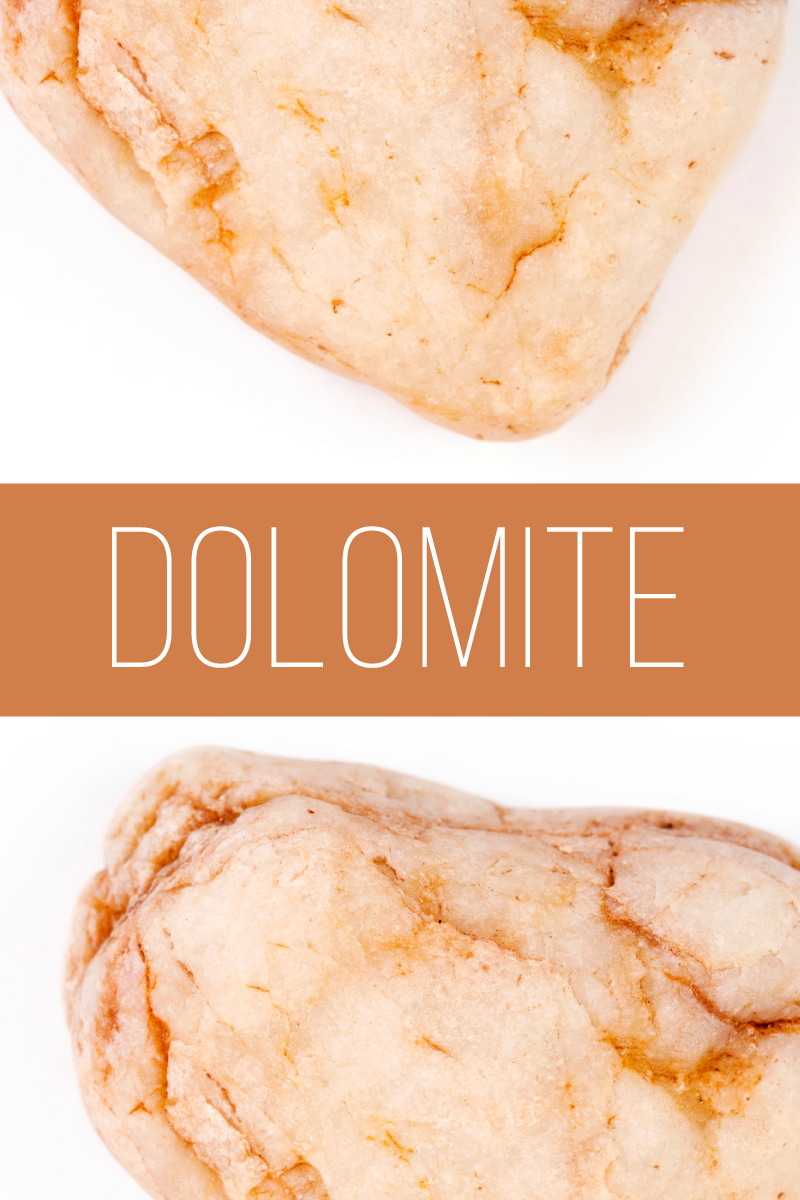 Dolomite is a colorless, tan, or pink mineral known for its unusual saddle-shaped crystal clusters. Is dolomite a gemstone? Absolutely! Although, it’s more popular as a collector’s gem.
Dolomite is a colorless, tan, or pink mineral known for its unusual saddle-shaped crystal clusters. Is dolomite a gemstone? Absolutely! Although, it’s more popular as a collector’s gem.
You should know “dolomite” refers to both the dolomite mineral and the dolomite rock. The rock is also called dolostone, but some still call it “dolomite.” Don’t worry — we’ll only call the mineral “dolomite” and the rock “dolostone.”
What makes dolomite unique? We’ll answer that today as we dig into dolomite gemstone properties, varieties, uses, and more!

About Dolomite Stone
Dolomite is a popular mineral specimen that shares its name with Italy’s Dolomite Alps. Besides dolostone, dolomite is also an essential part of other gemstones such as Tiffany stone and synthetic opalite.
You may see dolomite inclusions in precious gemstones like emeralds and rubies, or more commonly quartz. Dolomite beads are even used to cultivate pearls!
Beyond gems, dolomite uses stretch across various industries.
Here’s what dolomite is used for:
Stabilizing glass
Providing magnesia
Researching particles
Restoring streams
Astrologically, dolomite is a zodiac stone for Aries. Dyed dolomite resembles turquoise and can substitute for this traditional December birthstone.
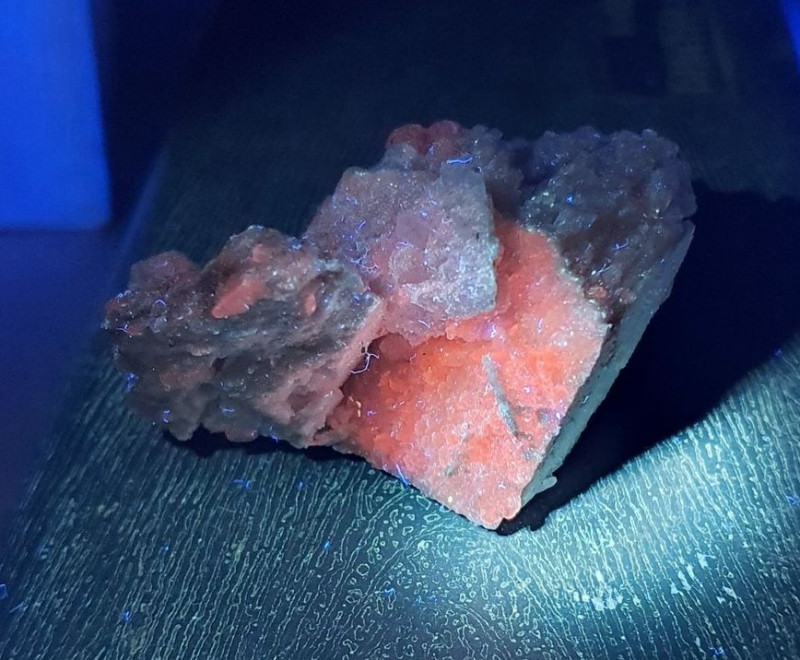
Dolomite Specifications & Characteristics
The dolomite mineral is a calcium magnesium carbonate with the formula CaMg(CO3)2. Common additional elements are manganese, zirconium, iron, lead, and cobalt.
The rock dolostone is a sedimentary carbonate rock composed of over 50 percent dolomite. Dolomites are found as crystals, crystal clusters, or masses, which are more durable.
Here are all the dolomite crystal properties:
Mohs hardness: 3.5-4 - Varies by crystal direction
Color: Colorless, white, gray, pink, or tan, very rarely light blue (dolomite); Tan, brown, white, or gray (ankerite); Pink, white, or tan (kutnohorite)
Crystal structure: Trigonal
Luster: Vitreous to pearly (dolomite & ankerite); Subvitreous, resinous, or dull (kutnohorite)
Transparency: Transparent to translucent (crystals); Translucent to opaque (masses)
Refractive index: 1.50-1.68 (dolomite); 1.51-1.75 (ankerite); 1.52-1.73 (kutnohorite)
Density: 2.84-2.93 (dolomite); 2.93-3.10 (ankerite); 3.10-3.12 (kutnohorite)
Cleavage: Perfect 3-direction (dolomite); Perfect 1-direction on [1011] (ankerite & kutnohorite)
Fracture: Conchoidal (dolomite); Subconchoidal (ankerite & kutnohorite)
Streak: White
Luminescence: Sometimes triboluminescence (friction-induced glow); Sometimes fluorescence - Manganoan dolomite - light pink to bright red in SW-UV and LW-UV; Dolomite - White, blue, light green, or orange in LW-UV & white, blue, light green, or tan in SW-UV
What’s with the “ankerite” and “kutnohorite” mentioned above? We’ll explain next!
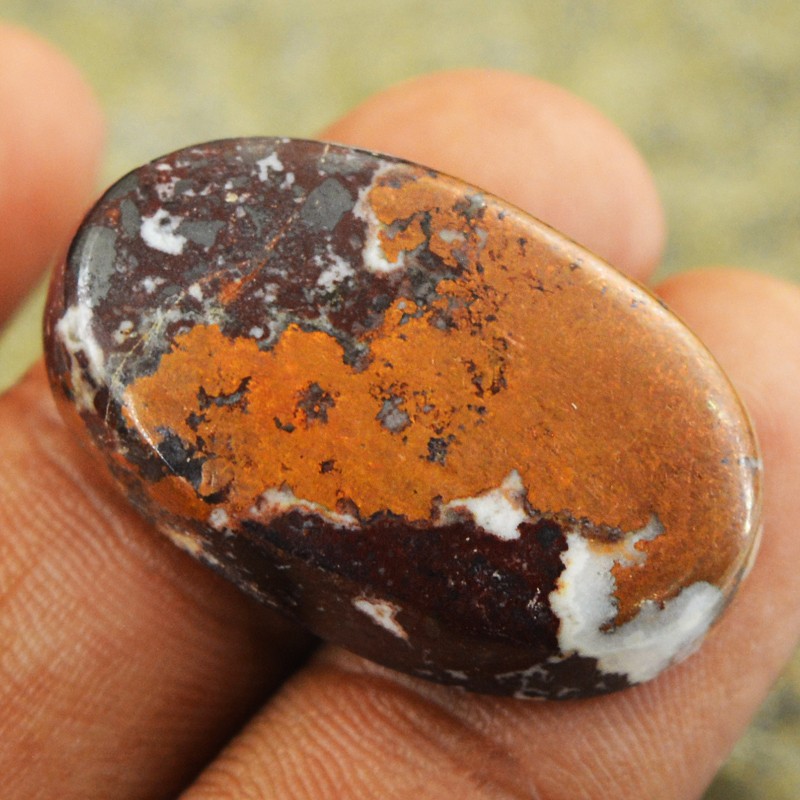
Types of Dolomite
Dolomite has seven varieties we’ll discuss. Four of them aren’t varieties so much as variants, meaning they’re only slightly different, not distinct enough to warrant a separate variety:
Cuprian Dolomite: Light green variant containing cuprite
Cobaltoan Dolomite: Rare, bright pink to fuchsia variant containing cobalt
Manganoan Dolomite: Pink variant containing manganese
Ferroan Dolomite: Pinkish-red to brown variant containing ferrous iron (Fe2+), but less iron than magnesium
The next “varieties” are in the dolomite series. Generally, that means they share the same crystal structure but an element in their formulas is changed:
Ankerite: Typically tan to brown (can be white or gray), translucent to transparent type containing iron and manganese, with more iron than magnesium
Kutnohorite: Rare, manganese-rich, commonly pink (can be white or tan) and translucent type
Minrecordite: Very rare, translucent white or colorless type containing zinc and calcium
 Pictured above: Wave dolomite
Pictured above: Wave dolomite
Dolostone Varieties
Dolostone is also used as a gemstone, so it’s worth knowing the dolostone varieties:
Caymanite: White, red, or black Cayman Islands variety sometimes color-banded in orange, brown, and gray
Kona Dolomite: Ancient pink to red variety containing teal-colored fossilized algae (stromatolites), often patterned in yellow, orange, brown, gray, and white
Wave Dolomite: Also called Rolling Hills dolomite, a type of Kona dolomite with waved banding in orange, tan, and red shades
Caymanite is harder than any varieties mentioned (including dolostone) at 5-7 on the Mohs scale.
That’s it for varieties, but what is the meaning of dolomite stone?

Dolomite Gemstone Meaning & History
Dolomite symbolizes comfort, centeredness, and emotional nourishment. It carries Dolomite Alps folklore, specifically legends of the local Ladins. The most significant Ladinian tale is the national epic about the matriarchal “Kingdom of the Fanes.”
In a nutshell, the legend tells of the first Ladins, a matrilineal society of people called the Fanes. They thrived for generations under the queen’s rule.
Their downfall came when the new king started waging war for greed and betrayed his people for access to Aurona, a “land of plenty.”
The king became stone and the remaining Fanes retreated inside the mountains. It’s said their kingdom will be reborn once silver trumpets sound.

History
The name of the dolomite mineral, rock, and mountain range all honor French mineralogist Déodat de Dolomieu.
Dolomieu described dolomite rock (dolostone) in 1791 after finding it in the Alps of Tyrol (present-day Dolomite Alps). Swiss chemist Nicolas-Théodore de Saussure chose the name in 1792.
However, Saussure also confirmed Dolomieu was not the first to describe dolomite. Rather, the first description came from Swedish botanist Carl Linnaeus in 1768, who called it marmor tardum, or “slow marble.”
Yet another description came in 1778 from Austrian naturalist Belsazar Hacquet, who called the stone lapis suillus, or “stink stone.”
Fortunately, there wasn’t any animosity among the men. When Dolomieu met with Hacquet in Slovenia in 1784, Hacquet made it clear that Linnaeus’s description came before his own. Hacquet even specified this in volume 2 of his book published in 1781.
In the 20th century, geologists proposed “dolostone” as an alternative name for dolomite rock to differentiate it from the mineral. Because “dolomite” first applied to the rock, however, many geologists didn’t agree on the change. In fact, the American Geological Institute called the dolostone name “obsolete” in their 2017 glossary.
Moving from history to healing, what is dolomite stone good for?

Dolomite Crystal Healing Properties
Both dolomite and dolostone can function as powerful healing stones with similar abilities.
Pink dolomite healing properties match those of other pink gemstones in promoting love, acceptance, and forgiveness. Unsurprisingly, they’re also great chakra stones for the heart chakra!
Similarly, like other white crystals, white dolomites can improve concentration, increase spirituality, and detoxify the body.
For more specific physical and emotional ailments, how do you use dolomite stone?
Physical Healing
Crystal healers use dolomite for:
Strengthening bones
Increasing blood oxygenation
Easing premenstrual syndrome
Improving stamina
Emotional Healing
Emotional dolomite stone benefits are said to include dispelling negative thoughts, balancing chaotic emotions, and encouraging spiritual connection.
Cobaltoan dolomite is also popular for navigating deep emotional wounds, helping you handle the discomfort of working through them, then find your own strength to go forward.
Beyond spiritual uses, is dolomite valuable? You bet! We’ll cover its value factors next.
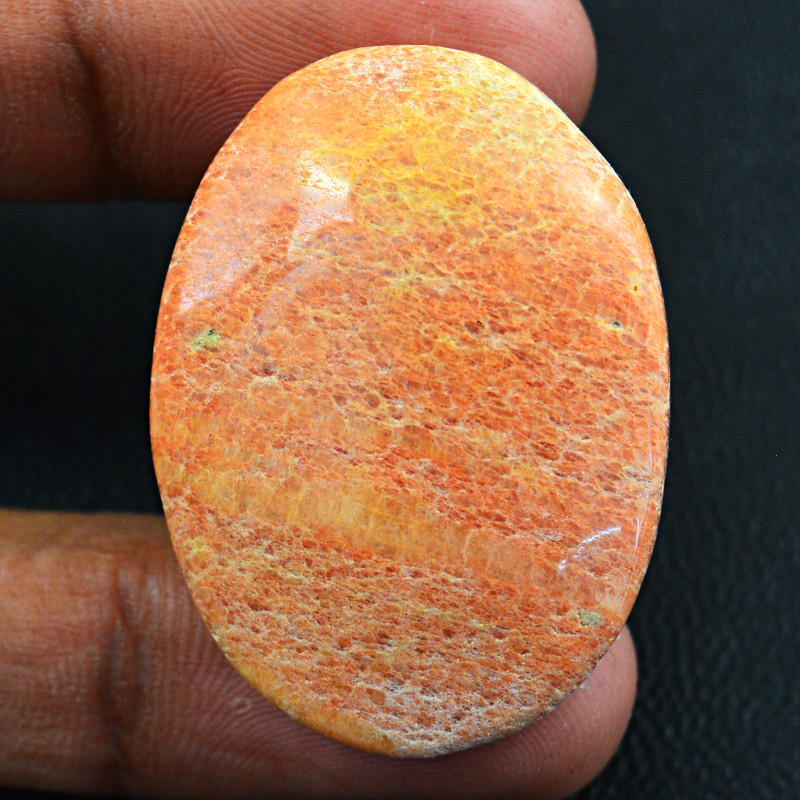
Dolomite Gemstone Properties
Because dolomite is less common for jewelry, grading its value isn’t as standard as other gems. However, the categories are similar: color, cut, transparency, carat weight, and treatments.
Color
Dolomite color in crystal form is usually a pale shade of gray, white, yellowish-brown, pink, or blue. Masses tend to be white, gray, or tan.
Color patterns in dolostone result from their layered structure of different minerals and impurities. Over time, ferrous iron and weathering cause most dolostones to become matte yellowish-brown.
Cut
Perfect cleavage and variable softness makes cutting dolomite difficult. Still, some skilled gem cutters create beautiful faceted dolomites.
Typically, dolomite crystals are sold in their raw form. Pink kutnohorite clusters can form fascinating tapered shapes resembling rounded feather dusters. Ankerite and massive dolomite are occasionally faceted or cut as cabochons.
Dolomite masses and dolostones are more durable, perfect for carvings, beads, and cabochons. These are slightly more valuable than dolomite crystals.
Transparency
Crystal or massive material showing good transparency or interesting inclusions can carry high value.
Carat Weight
Raw crystal clusters can be large and dolomite masses can lend huge carvings. Locality can play a role in size — faceted New Mexico dolomites have only gotten to 5 cts, while faceted dolomite stones from Spain have surpassed 100 cts.
Treatments & Simulants
Like howlite, dolomite may be dyed to simulate turquoise or lapis lazuli. Dyed dolomitic marble may be sold as imitation jade, dubbed “Mountain Jade.”
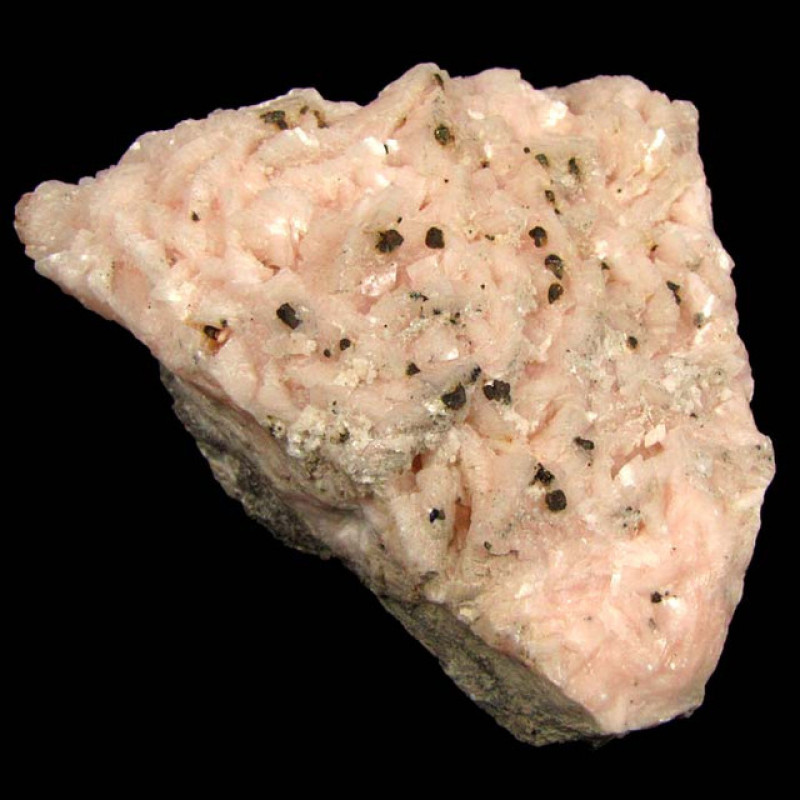
Dolomite Formation & Sources
Varied theories surround dolomite’s formation, but the most-discussed process is dolomitization.
Dolomitization starts with calcite, another calcium carbonate. When seawater or saltwater evaporates, commonly in coastal salt flats, magnesium separates. This magnesium replaces calcite’s calcium, transforming it into dolomite.
Miners find most dolomites in metamorphic rocks, geodes, dolomitic marble, and talc rocks.
Where can dolomite be found?
Mining Locations
Dolomites are abundant worldwide. Spain is renowned for high-quality, transparent crystals and clusters. Colombia is the only known source of light blue dolomites.
More primary sources include:
Brazil
Canada
China
Czechia (cobaltoan, kutnohorite)
DR of Congo (cobaltoan)
Italy (kutnohorite)
Japan (kutnohorite)
Mexico (wave dolomite)
Morocco (cobaltoan)
Namibia (cobaltoan, cuprian)
South Africa (kutnohorite)
Switzerland
Tasmania (ankerite)
USA - Kansas, Missouri, New Mexico (transparent), New Jersey (kutnohorite), Oklahoma
Now, is dolomite expensive? Nope, it’s affordable!
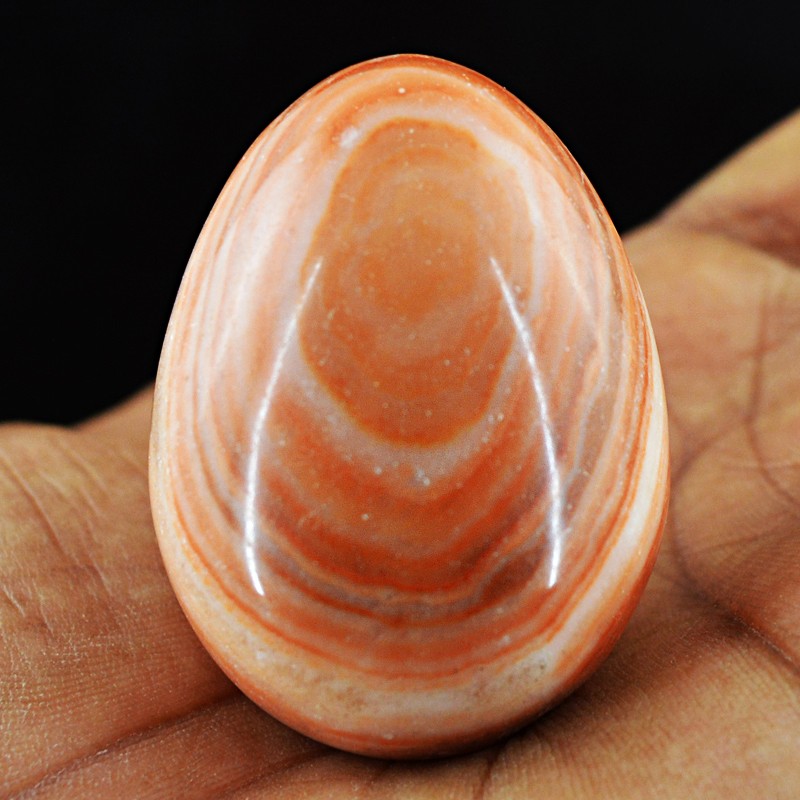
Dolomite Price & Value
Dolostones are slightly more expensive than dolomites because they’re more durable.
Wave dolostone cabochons, often labeled “dolomite jasper,” range from $0.10-$2.50 per carat. Carvings are $0.02-$0.40 per carat.
How much is dolomite worth? Dolomite cabochons are around $0.04 per carat at wholesale. Rough dolomite or ankerite specimens cost $0.02-$0.30 per carat.
Dolomite pendants or rings cost $3-$4, though added materials can mean prices around $30-$70. Faceted dolomite gemstones go for $20-$30 per carat.
Dolomite Care and Maintenance
The first gemstone care step is choosing a low-vulnerability option. Because dolomite is prone to damage, pendants or earrings are safest. We recommend protective settings for rings.
Store dolomite in a fabric pouch separate from other gems. To clean it, simply mix warm water and mild soap, dip a soft brush in the mixture, and gently scrub the stone. Dry it with a microfiber cloth after. Avoid strong chemicals or high heat.

Delight in the Landscape of Dolomite!
Both dolomite and dolostone are beautiful gifts of nature. Wearing or carrying dolomite brings the pleasures and centeredness of being in the Dolomite Alps… without the airfare!
Want a delightful, earthy stone? Buy dolomite gemstones today!
Search the Gemstone Encyclopedia
Related Auctions
Related Articles
Originally the Birthstones or gemstones were associated with a zodiac sign or the month of a individuals birth. Find out what your stone is and view the stones we have for sale
8th Feb 2021
There are dozens of quartz and chalcedony gems with various colors and patterns. Learn all about quartz properties and every type of quartz, from amethyst and agate to plasma and phantom quartz!
15th Oct 2020
Hackmanite is a pink to violet sodalite gem known for its unique color-change and luminescence. Learn why hackmanite is special, from its rare qualities to the types of hackmanite jewelry available.
28th Mar 2018
Latest Articles
Catapleiite is a lesser-known mineral and rare gemstone often found as stunning tabular rosettes near other rare stones. Discover the history, prices, benefits, and properties of catapleiite!
28th Apr 2025
Yugawaralite is a rare colorless, white, or pinkish zeolite crystal named for its discovery in Yugawara, Japan. Here we uncover the multifaceted history, properties, prices, and uses of yugawaralite.
24th Mar 2025
Simpsonite is a lesser-known mineral known on the gem market for its durability, yellow-orange color, and rarity. Discover all the properties, uses, prices, and history of simpsonite.
3rd Mar 2025
Article Categories
How To's is where you will find helpful articles from gem Rock Auctions on how to cut gemstones, select gemstones and buy gemstones.
9 Articles




